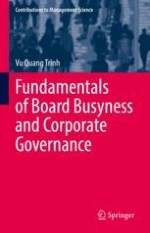2022 | OriginalPaper | Buchkapitel
3. Setting the Stage: Board Busyness as a Matter of Modern Banking Context
verfasst von : Vu Quang Trinh
Erschienen in: Fundamentals of Board Busyness and Corporate Governance
Aktivieren Sie unsere intelligente Suche, um passende Fachinhalte oder Patente zu finden.
Wählen Sie Textabschnitte aus um mit Künstlicher Intelligenz passenden Patente zu finden. powered by
Markieren Sie Textabschnitte, um KI-gestützt weitere passende Inhalte zu finden. powered by
